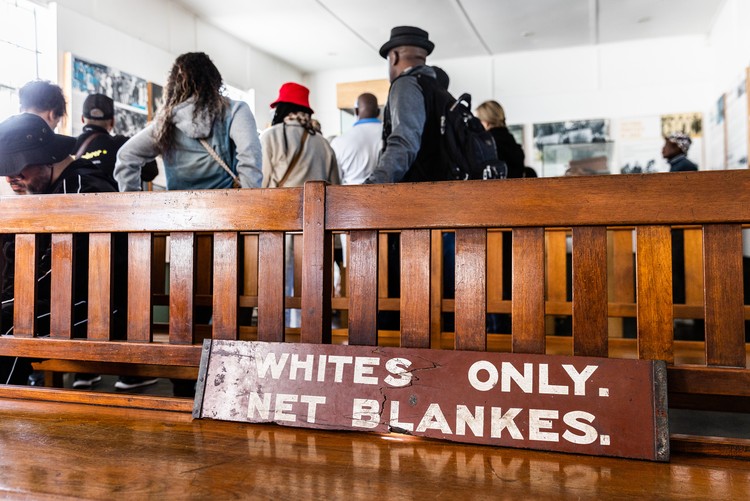
18 May 2023
The first room in the museum is an old courtroom.
The Langa Dompas Museum in Cape Town is steeped in the history of the township which celebrates its centenary this year.
The buildings used to house the offices of the Bantu Affairs Administration which issued the dreaded “pass” which Africans had to carry in “white” areas under apartheid. It was a criminal offence not to have a valid pass.
The museum, just opposite Guga S’thebe Arts and Culture Centre and down the road from Langa’s first art gallery, pays homage to struggle heroes, and those who suffered under apartheid.
The first room you enter was originally a court. This is where people who boarded a whites-only bus, did not have a valid “dompas”, or were charged with another apartheid-era crime, were heard.
The museum displays old posters and photographs, apartheid era signs and original “dompasses”.
In the next room, glass cabinets house original dompasses. The walls are covered with photographs of protests that took place in the past and others with information about pass laws and the struggles people faced. The next room is the “holding cell”. It is a small room, but according to museum curator Thami Sijila, up to 200 people were held here during court hearings.
Sijila, who had a background in tourism, opened the museum in 2014, with help from the Institute for Justice and Reconciliation and the City of Cape Town. The City of Cape Town owns the building and provides electricity, cleaning and water.
Curator Thami Sijila runs the museum.
He says he saw a need for the proper past of Langa during apartheid to be known, especially by young people. “We know European history, American history. Why don’t we know enough about African history? Our history? That is the main reason why we decided to open the museum and why I am here today.”
Today the museum is a tourist destination, part of the popular route which includes the Guga S’thebe Arts and Culture Centre, the art gallery, and the restaurant Jordan Ways of Cooking.
Today the museum is a tourist attraction.
Sijila also runs one-hour teaching sessions once a month with learners from Langa schools about the history of the township, teaching up to 50 learners at a time. With the money in the donation box, which is sometimes less than R1,000 for the month, he also provides lunch for the learners. “If we don’t hit the R1,000 target in time for the next session, then I approach people, friends, to help.”
As a volunteer Sijila does not get paid for the work that he does in the museum.
Topics that are covered in the museum include the history of the dompas, the apartheid laws and acts, marches and protests including the famous pass law protest of 1960. Led by Philip Kgosana, who was only 23 years old at the time, some 30,000 people marched from Langa to Cape Town. The road they used along the mountain, previously De Waal Drive, has been renamed Philip Kgosana Drive in memory of Kgosana, who died in 2017.
Documents from the apartheid era Bantu Affairs Administration which restricted the movement of black people in the cities.
The museum also puts on exhibitions now and again, and recently covered the history of the steamship SS Mendi. During World War 1, In 1917 more than 600 servicemen drowned when the ship, carrying 823 black South African soldiers and white officers sank on its way from Cape Town to France. The ship, under charter to Britain as a troop transport ship, was rammed by another British vessel, the Darro. Mendi Avenue in Langa is named after the ship.
Sijila said this year he hoped each month to commemorate an event in history which took place in Langa that month.
Langa, South Africa’s oldest township, marks its centenary this year.